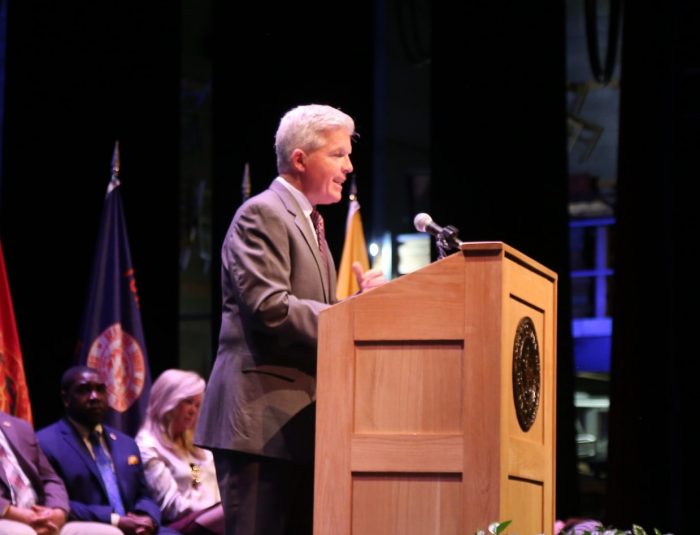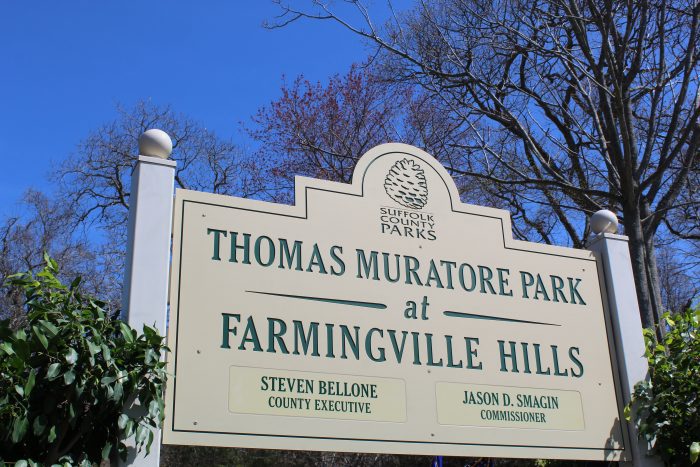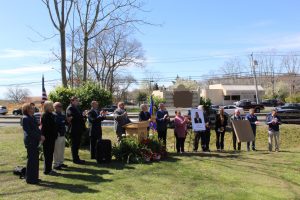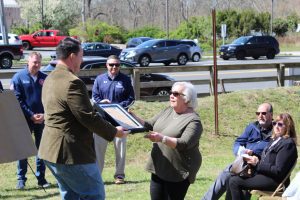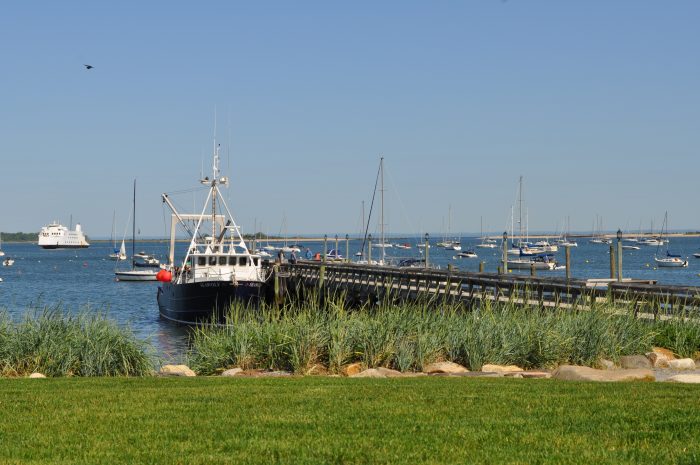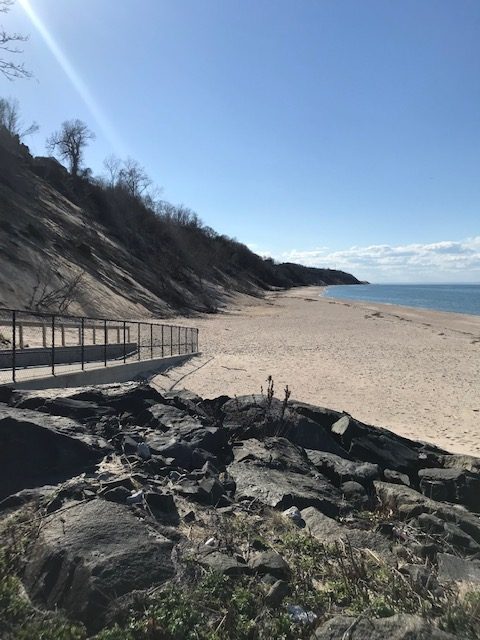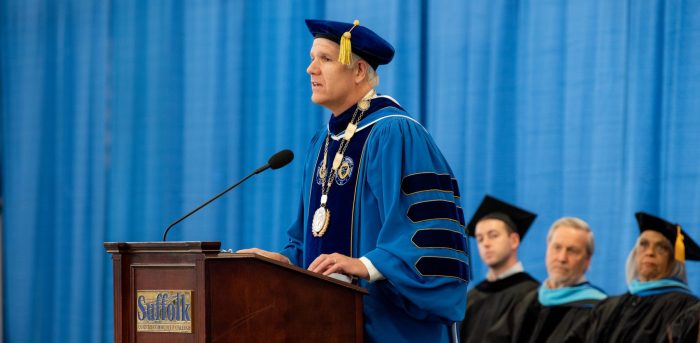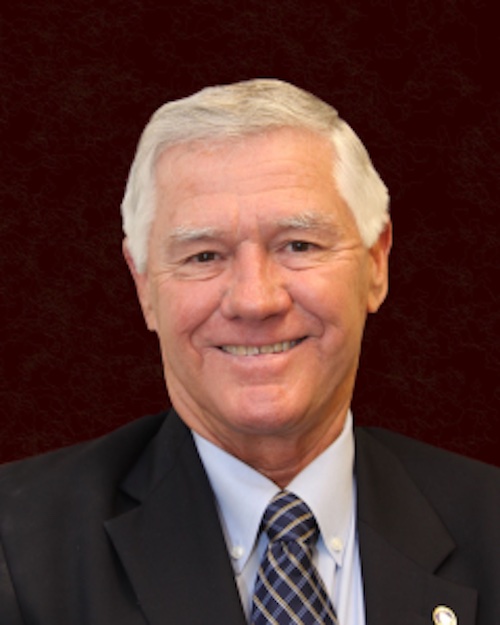This week, TBR News Media sat down for an exclusive interview with Stan Loucks, trustee of the Village of Port Jefferson. In the interview, Loucks addressed the relative inactivity at the club, the looming $10 million effort to save it, and the controversy around bluff stabilization.
You are the trustee liaison to the Port Jefferson Country Club. What does that role entail?
The liaison to the country club means pretty much that I’m in charge of everything up here: the golf across the road; the tennis, which we will not have this year because of the erosion of the bluff; and I coordinate with the tenant upstairs.
Could you inform the readers on how this building was acquired by the village?
In 1978 the mayor of the village was Harold Sheprow. I’m pretty sure the land was owned by [the Estate of Norman K.] Winston. He had a large building corporation up here in Harbor Hills. In 1978 the village voted to purchase not only the country club, but both East and West beaches were involved in that sale for about $2 million.
Since its acquisition by the village over four decades ago, has this country club been a profitable investment for the village?
The country club has been deemed a self-sustaining, separate entity from the village in that we have our own budget. We have to pay our bills. We had a tennis membership last year of over 300 members and a golf membership of around 500 members.
The revenue that we take in has to meet our expenses. The village taxpayer, after the purchase of the property and the payoff of the bond, contributes no tax money to the country club whatsoever. Everything up here is basically coming off the backs of the membership.
As a follow-up, is there any kind of rent that the country club pays to the village treasury?
No, we are not renting the property. We are an attraction, I believe, for the village. I believe the village benefits even if you’re not a member. I think they benefit from the fact that we have a country club that’s available to residents at a very, very reasonable rate.
We have the two beaches that are kind of semi-private. There are nonresidents that can use our beaches because they are members of the country club. The only rent that’s collected is from the tenant upstairs and that rent money goes directly to the village, not to the country club.
And that tenant upstairs, is that the concession?
That’s the concession. They own Danfords downtown. It has just recently changed hands [to TPG Hotels, Resorts & Marinas]. The Crest [Group] had this for a couple of years and when they sold Danfords, [TPG] took over the tenancy of this building not downstairs, but the upstairs restaurant and catering end of it [known as The Waterview at Port Jefferson Country Club].
The downstairs here is pretty much all country club. We have two locker rooms. We have a large meeting room. We have a fitness center and a membership office. That’s pretty much what we have downstairs. Everything else upstairs belongs to the tenant.
What has been the return on investment over the several decades since the village purchased the country club?
In terms of dollars and cents, really nothing other than the fact that we have in our possession two beautiful beaches, a beautiful golf course — we did have beautiful tennis courts, eight of them. Other than that, the village has received considerable rent over the years. The only thing the village has gained financially is from the rent of this building. All of the money that is made by the golf course stays with the golf course.
That’s pretty much all the village has gained from this country club, which is a lot. I think property values are certainly affected by what’s going on here. People want to move into this village and I think one of the reasons they want to be here is for the opportunities coming out of the country club.
Right now, those opportunities have diminished a little because of what’s going on out there with Mother Nature. With all of the upcoming anticipated construction, we decided that we will not have any tennis membership this year. We can’t put people out there and put them in danger on those courts because at any given moment, a massive landslide can just let loose. There’s a huge ravine over there now. The gazebo that they used for their wedding receptions went over the bluff. The bluff is moving in on us.
To backtrack a little, you said before that it’s kind of a private country club. What does that mean exactly? You’re a public official, so what is the connection between the country club and village? Is this a private or a public entity?
Well, it’s private in that you have to be a member to be on the facility and to play golf or tennis, but it’s public in that there is a public restaurant upstairs. I think very few people realize that, so in my mind it’s kind of a semi-private area even though we own it.
By we, do you mean the village?
The village. The village owns it. Anyone from the public can come in here and go to the restaurant, but you cannot come in here to play golf unless you’re a guest of a member. The golf course is private just like any other club, but the property itself is not private. You don’t have to be a member to go to the beaches and, as I said, you don’t have to be a member to go to the restaurant upstairs.
At the time when this property was purchased by the village, bluff stabilization must have been an unforeseen expense. In your view, is this property a depreciating asset?
That’s a tough one to answer. Since I started my term, I have walked that beach down there since 2015 with the Army Corps [of Engineers], with DEC, with other engineers. At that point in time, it was very obvious to me that this bluff was rapidly eroding.
A lot of it was caused by global warming, storms and the Town of Brookhaven ignoring the repair of the two jetties in Mount Sinai Harbor. It took us from 2015 to just this past year to get the first permits, which are for the lower wall, that have already been approved. We finally got the permits from DEC. We waited a few more months for the Army Corps to approve. Once they approved, we put it out for bid. We got bids ranging from $4.8 million to $6.8 million. The bid was awarded and construction will begin shortly to do the lower wall, which runs from the bottom of the East Beach Road 450 linear feet along the bluff from east to west.
That’s not going to save our tennis courts. The engineers have told us that the bluff is so steep now that it’s got to eventually level out to about 30 degrees before plantings can really go on there. A lot of our bluff is almost straight down and when it goes, it collapses. Right now the bluff is in a situation where, in my opinion, I don’t think plantings are going to hold on there. There are plans for another wall, what they call the upper wall, that’s supposed to go behind this building. There is an engineering plan in place to put a steel wall all around this facility. I’m not 100 percent sold on the idea that a wall is going to permanently protect the building because, if the bluff keeps on going, it may come in from the sides.
The plans are in place and the drawings have been made. It has not been voted upon by the board yet to move forward with it or not. The $4.8 million bond for the wall has been awarded. I think the treasurer has figured out that it will cost the taxpayer about $170 a year. However, we are actively applying for help from FEMA. I don’t know how the taxpayers are going to react to it. We’re looking at a total of $10-to-$12 million to save this building, basically. I’m not sure how the rest of the board feels about this, but it’s scary.
Just to go back to the original question, given all of these expenses, is this property a depreciating asset for the village?
Well, it depends on what you mean by depreciate. If it’s going to cost us $10 million to save it, that to me is a depreciation. It’s a burden that’s going to be put on the taxpayers. I guess, yes. If we lose this building, that’s a depreciation. One the other side of it, $10 million is also a big fiscal responsibility to put back on the village residents. It’s a tough one to answer. The village is receiving rent from the restaurant. I am not sure that the amount of rent that we’re getting is enough to offset a $10-to-$12 million bond.
Although fewer than 10% of village residents are members here, the other 90% of village residents that are nonmembers will be included in that bond. What would you say to those 90% of resident nonmembers who are being asked to foot the bill to preserve an area that they do not use themselves?
I can only speak for myself here.
I thought we should have had a referendum to vote on the remainder of the repair work. I totally agree with the lower wall because I think the lower wall is going to help protect our beaches. The beaches are used by the entire village.
In terms of the clubhouse, my wife and I come up here every Friday and we enjoy it, but the village residents and the membership do not use the building the way it should be used. I can’t comprehend it. We come up here and always have a good meal and get good service. I sit there every Friday night and wonder why the place is not filled with people.
We have 8,000 residents in this village. We have 500 golf members this year. The place should be frequented and it’s not. I don’t know the answer to that. I’m not so sure that if it were put to a vote it would be approved. We didn’t think it would be approved when the referendum went out to buy it, but it was.
Yeah, I think it would be unfair to ask the village residents to pay for something that they do not use. However, I totally approved of the lower wall. I think that’s going to protect our beaches.
In your view, is it a worthy undertaking by the village to save the clubhouse?
The mayor understands it too. She’s baffled by the same question that I have: Why do the residents not use the facility that’s available to them? They don’t take advantage of the programs that are run up here. Yeah, there’s a charge, but it’s something that you can’t get anywhere else.
I’m biased. I love this club and I’ve been here for a lot of years and I know the club pretty much inside and out. The one question I can’t answer is why people don’t use it. The other question that’s difficult for me to answer is, is it worth it to the rest of the residents who do not belong here? I guess the obvious answer is “no.” I want to save it, but it’s not a decision that one person can make. There hasn’t been a movement one way or the other.
You would think that at a board meeting, if this was a major concern, that that boardroom would be filled with residents — and it’s not. The residents that were there at the last board meeting, they’re concerned about the park; they’re concerned about my taking over Texaco Park so that we could play pickleball once a week. They’re not concerned about the big, huge, major issue facing this village and that bothers me and it bothers the rest of the board. Where’s the interest? You’ve got a bluff that’s going to take away not only our country club, but residents along this bluff too. And they don’t seem to be concerned.
Is there a possible incentive to bring more people into the club? Could the village make the course open to the public, like Bethpage State Park?
The possibility is there that you could open it up and make it a public course. I would not like to see that. I see five public courses at Bethpage — I’ve played a lot of them down there. Yes, the Black is gorgeous, the Red is not too bad, but the other courses down there are pretty beat up. I don’t think making this a public golf course will change the feelings of the community at all. They voted to buy the place, but now they don’t want to save it. To me, that doesn’t make any sense at all.
Another big question is: “Can it be saved?” Nobody gives us a guarantee. I am not the engineer, but I’m thinking there’s a potential that when you start driving steel into those areas that it’s going to fracture that bluff. The upper wall design is a very long line that’s being cut into that bluff and I’m not sure they can possibly do it without taking the back deck off of here and I’m not sure, if they can do it, that it’s not going to fracture that bluff.
Is it possible for this to be more of a collaborative effort between the taxpayers and the village government?
I would love to hear from the taxpayers, the residents — and we haven’t. We believe that we’ve publicized it enough and I know there’s a constant stream of traffic going down East Beach Road [in Belle Terre]. People are looking at the bluff, but they’re not coming to the board meetings. They’re not telling us their feelings one way or the other. To me, it’s frustrating to see that.
Boy, if I were a taxpayer, I’d be at that board meeting and say, “What’s going on here? We want to know. Where are we at? What are we doing? How much money is it going to cost us? When is it going to happen? Is it going to happen?”
I’d like nothing better than to see that board room filled with people, negative or positive. I want to know why the interest is not there.
Is there anything else you like to say to the local readers of Port Jefferson?
I love this village and I love this country club. I want to see the best result that we can possibly get. I don’t have the answers. I just don’t understand why the village and the membership do not use this building. It’s frustrating to me.


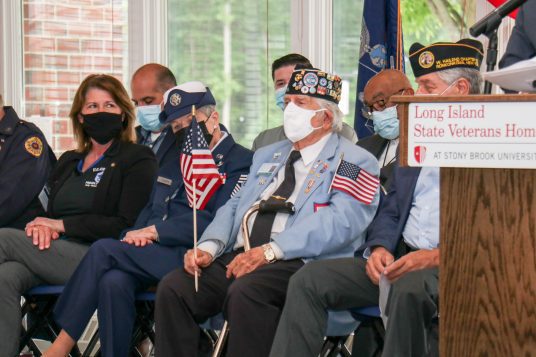
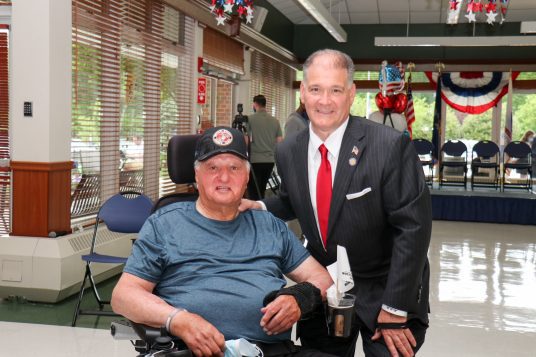

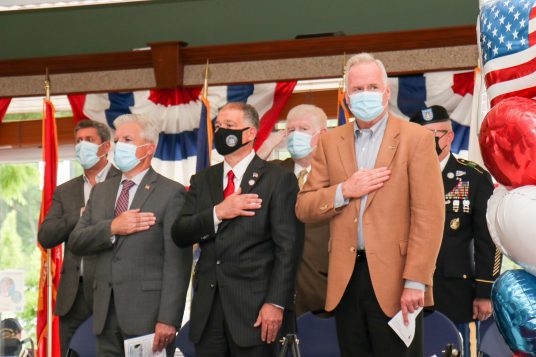
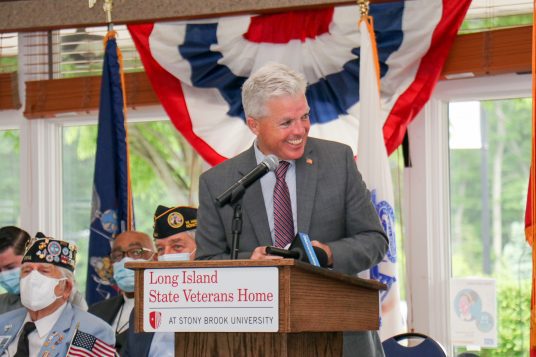

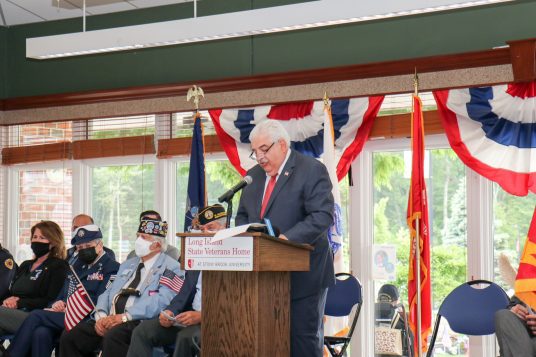

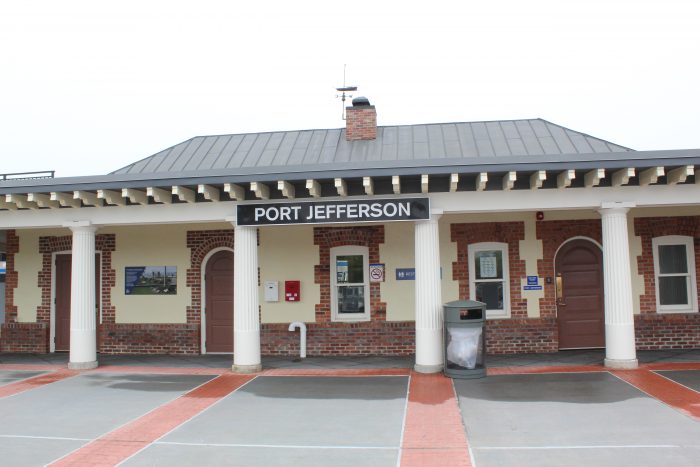

 The Station Street project has been in the works since 2016, when the village approved a master plan to revitalize Upper Port. As part of joint efforts between the village, the Town of Brookhaven, LIRR and the state Department of Transportation, the proposed Station Street would create a plaza that will help channel traffic from the main thoroughfare, alleviating congestion as drivers enter the village.
The Station Street project has been in the works since 2016, when the village approved a master plan to revitalize Upper Port. As part of joint efforts between the village, the Town of Brookhaven, LIRR and the state Department of Transportation, the proposed Station Street would create a plaza that will help channel traffic from the main thoroughfare, alleviating congestion as drivers enter the village.